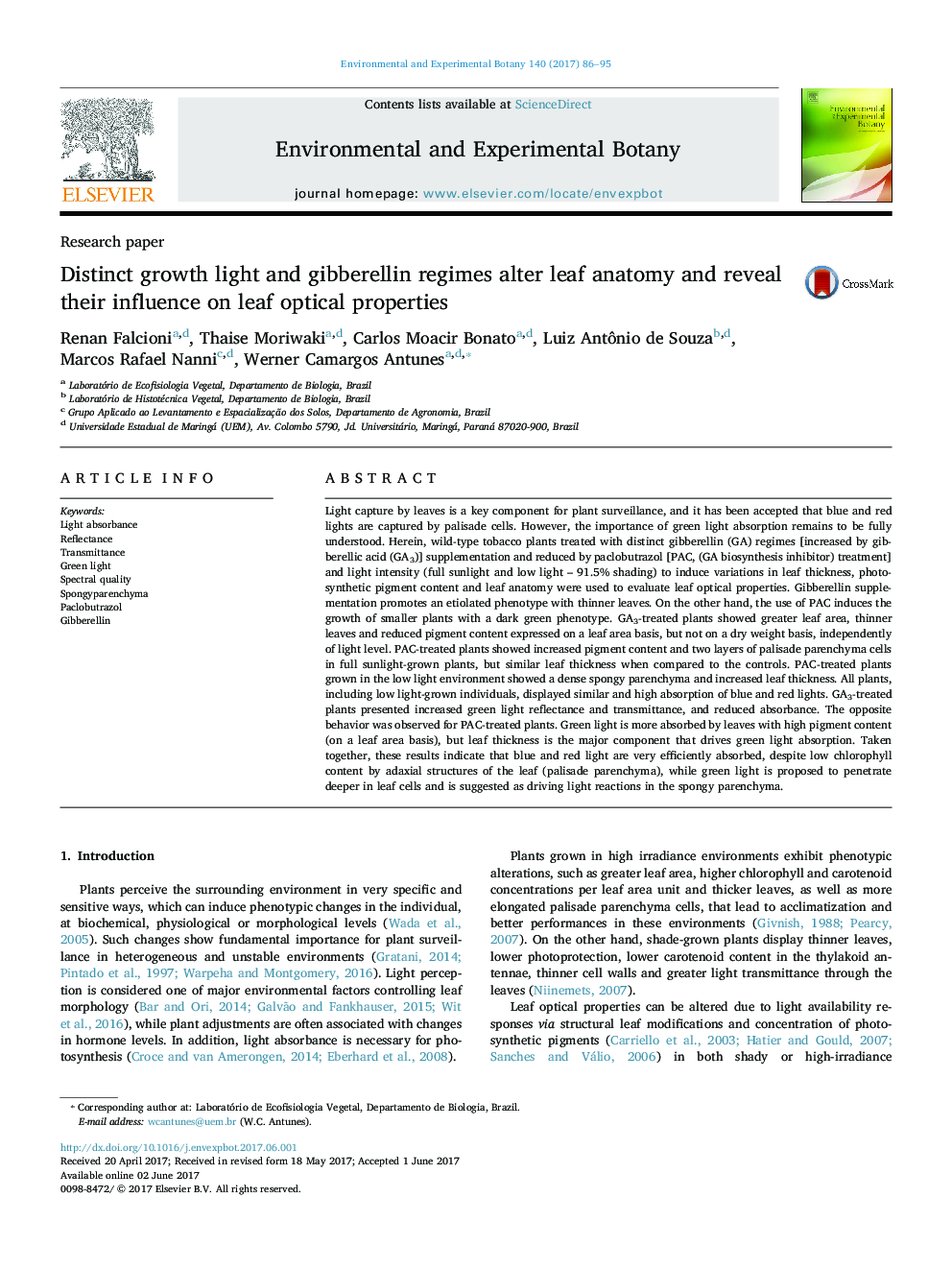| کد مقاله | کد نشریه | سال انتشار | مقاله انگلیسی | نسخه تمام متن |
|---|---|---|---|---|
| 5766648 | 1628037 | 2017 | 10 صفحه PDF | دانلود رایگان |
- Leaf spectral absorbance shape differences exist regarding photosynthetic pigments.
- High blue or red light leaf absorption efficiency in low chlorophyll content occurs.
- Increases in chlorophyll content and leaf thickness increase green light absorption.
- Green light is proposed to penetrate deeper in leaf due high transmittance.
- Green light absorption is increased on a denser spongy parenchyma.
Light capture by leaves is a key component for plant surveillance, and it has been accepted that blue and red lights are captured by palisade cells. However, the importance of green light absorption remains to be fully understood. Herein, wild-type tobacco plants treated with distinct gibberellin (GA) regimes [increased by gibberellic acid (GA3)] supplementation and reduced by paclobutrazol [PAC, (GA biosynthesis inhibitor) treatment] and light intensity (full sunlight and low light - 91.5% shading) to induce variations in leaf thickness, photosynthetic pigment content and leaf anatomy were used to evaluate leaf optical properties. Gibberellin supplementation promotes an etiolated phenotype with thinner leaves. On the other hand, the use of PAC induces the growth of smaller plants with a dark green phenotype. GA3-treated plants showed greater leaf area, thinner leaves and reduced pigment content expressed on a leaf area basis, but not on a dry weight basis, independently of light level. PAC-treated plants showed increased pigment content and two layers of palisade parenchyma cells in full sunlight-grown plants, but similar leaf thickness when compared to the controls. PAC-treated plants grown in the low light environment showed a dense spongy parenchyma and increased leaf thickness. All plants, including low light-grown individuals, displayed similar and high absorption of blue and red lights. GA3-treated plants presented increased green light reflectance and transmittance, and reduced absorbance. The opposite behavior was observed for PAC-treated plants. Green light is more absorbed by leaves with high pigment content (on a leaf area basis), but leaf thickness is the major component that drives green light absorption. Taken together, these results indicate that blue and red light are very efficiently absorbed, despite low chlorophyll content by adaxial structures of the leaf (palisade parenchyma), while green light is proposed to penetrate deeper in leaf cells and is suggested as driving light reactions in the spongy parenchyma.
Journal: Environmental and Experimental Botany - Volume 140, August 2017, Pages 86-95
